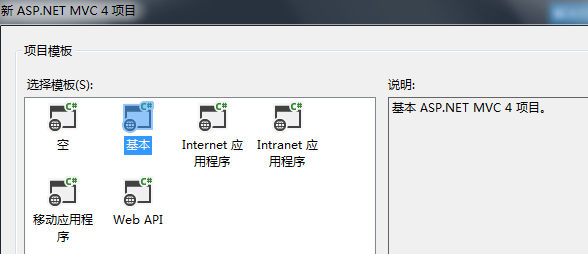MVC 用户资料的问题
0

刚刚接触mvc 在建立的项目中我看到mvc已经内置了用户的注册和登录功能,内置的AccountController 中的 Register 注册方法里面是使用 Membership.CreateUser 方法进行注册新用户的,参数为:
 View Code
View Code
// // 摘要: // 将具有指定的属性值和唯一的标识符的新用户添加到数据存储区,并返回一个状态参数,指示该用户是否成功创建或用户创建失败的原因。 // // 参数: // username: // 新用户的用户名。 // // password: // 新用户的密码。 // // email: // 新用户的电子邮件地址。 // // passwordQuestion: // 成员资格用户的密码提示问题的值。 // // passwordAnswer: // 成员资格用户的密码提示问题答案的值。 // // isApproved: // 一个布尔值,该值指示是否批准新用户登录。 // // providerUserKey: // 该用户的用户标识符,应存储在成员资格数据存储区。 // // status: // 一个 System.Web.Security.MembershipCreateStatus 值,该值指示该用户是否成功创建或用户创建失败的原因。 // // 返回结果: // 用于新创建用户的 System.Web.Security.MembershipUser 对象。如果没有创建用户,此方法将返回 null。 public static MembershipUser CreateUser(string username, string password, string email, string passwordQuestion, string passwordAnswer, bool isApproved, object providerUserKey, out MembershipCreateStatus status);
我想问的是,这些都是写好的参数,如果我的项目中在新建用户的时候还需要填写一些其他信息,比如爱好,年龄,所在地等……那么我该如何去做?还有这个注册用户的方法注册的用户在哪个库里面,该怎么找这个库?如果想要添加注册项的话是不是还要修改那个数据库中的表结构?
请指教!感谢~
最佳答案
0
个人觉得内置的这个注册和登录很不好用,有很大局限。最好是自己做,比较灵活。我建项目的时候都是选的“基本”,再自己加,也很快的

收获园豆:20
那么如果自己做的话,有些action方法怎么才能知道用户是否已经登陆了呢? 用户登陆后的信息票据是怎么实现的?
@然后、没所以:
 View Code
View Code
1 using System; 2 using System.Collections.Generic; 3 using System.Data; 4 using System.Data.Entity; 5 using System.Linq; 6 using System.Web; 7 using System.Web.Mvc; 8 using Mvc_WebOffice.Models; 9 using System.Web.Security; 10 11 namespace Mvc_WebOffice.Controllers 12 { 13 public class AccountController : Controller 14 { 15 private AccountContext db = new AccountContext(); 16 private DAL.Account account = new DAL.Account(); 17 18 // 19 // GET: /Account/ 20 [Authorize(Roles = "employee")] 21 public ActionResult Index() 22 { 23 return View(account.GetUserList()); 24 } 25 26 // 27 //GET: /Account/Login 28 public ActionResult Login() 29 { 30 ViewBag.roles = account.GetRoles(4); 31 return View(); 32 } 33 34 /// <summary> 35 /// POST:登录 36 /// </summary> 37 /// <param name="inputUser">输入的用户信息</param> 38 /// <returns></returns> 39 [HttpPost] 40 public ActionResult Login(User inputUser) 41 { 42 User user = account.GetUser(inputUser.UserName,inputUser.Password); 43 44 if (ModelState.IsValid) 45 { 46 if (user != null && user.Password == inputUser.Password)//如果通过验证 47 { 48 FormsAuthenticationTicket ticket = new FormsAuthenticationTicket( 49 1, 50 user.UserName, 51 DateTime.Now, 52 DateTime.Now.Add(FormsAuthentication.Timeout), 53 false, 54 account.GetRoles(user.ID)//获取权限(职位) 55 ); 56 HttpCookie cookie = new HttpCookie( 57 FormsAuthentication.FormsCookieName, 58 FormsAuthentication.Encrypt(ticket)); 59 Response.Cookies.Add(cookie); 60 61 return RedirectToAction("Index", "Account"); 62 } 63 else 64 { 65 ModelState.AddModelError("", "用户名或密码不正确!"); 66 } 67 } 68 69 return View(inputUser); 70 } 71 /// <summary> 72 /// 退出登录 73 /// </summary> 74 /// <returns></returns> 75 [HttpPost] 76 public ActionResult LoginOff() 77 { 78 FormsAuthentication.SignOut(); 79 return RedirectToAction("Login", "Account"); 80 } 81 82 // 83 // GET: /Account/Details/5 84 85 public ActionResult Details(int id = 0) 86 { 87 User user = account.GetUser(id); 88 UserDetail userDetail = account.GetUserDetail(user.UserName); 89 if (user == null) 90 { 91 return HttpNotFound(); 92 } 93 return View(userDetail); 94 } 95 96 // 97 // GET: /Account/Create 98 99 public ActionResult Create() 100 { 101 ViewBag.Password = "admin"; 102 return View(); 103 } 104 105 // 106 // POST: /Account/Create 107 108 [HttpPost] 109 [Authorize(Roles = "manager")] 110 public ActionResult Create(User user) 111 { 112 if (ModelState.IsValid) 113 { 114 db.User.Add(user); 115 UserDetail userDetail = new UserDetail { UserName = user.UserName, Email = "example@unbelts.com", RegisterDate = DateTime.Now }; 116 db.UserDetail.Add(userDetail); 117 db.SaveChanges(); 118 //给用户加默认权限(职位):employee 119 User_Role user_Role = new User_Role { UserID = db.User.FirstOrDefault(u => u.UserName == user.UserName).ID, RoleID = 1 }; 120 db.User_Role.Add(user_Role); 121 db.SaveChanges(); 122 123 return RedirectToAction("Index"); 124 } 125 126 return View(user); 127 } 128 129 // 130 // GET: /Account/Edit/5 131 132 public ActionResult Edit(int id = 0) 133 { 134 User user = db.User.Find(id); 135 if (user == null) 136 { 137 return HttpNotFound(); 138 } 139 return View(user); 140 } 141 142 // 143 // POST: /Account/Edit/5 144 145 [HttpPost] 146 public ActionResult Edit(User user) 147 { 148 if (ModelState.IsValid) 149 { 150 db.Entry(user).State = EntityState.Modified; 151 db.SaveChanges(); 152 return RedirectToAction("Index"); 153 } 154 return View(user); 155 } 156 157 // 158 // GET: /Account/Delete/5 159 160 public ActionResult Delete(int id = 0) 161 { 162 User user = db.User.Find(id); 163 if (user == null) 164 { 165 return HttpNotFound(); 166 } 167 return View(user); 168 } 169 170 // 171 // POST: /Account/Delete/5 172 173 [HttpPost, ActionName("Delete")] 174 public ActionResult DeleteConfirmed(int id) 175 { 176 User user = db.User.Find(id); 177 db.User.Remove(user); 178 UserDetail userDetail = db.UserDetail.First(m => m.UserName == user.UserName); 179 db.UserDetail.Remove(userDetail); 180 User_Role user_Role = db.User_Role.Where(m => m.UserID == id) as User_Role; 181 if (user_Role != null) 182 { 183 db.User_Role.Remove(user_Role); 184 } 185 db.SaveChanges(); 186 return RedirectToAction("Index"); 187 } 188 189 // 190 //用户权限管理 191 public ActionResult UserRoleManager(int id = 0) 192 { 193 List<Role> roles = account.GetUserRolesList(id); 194 if (roles == null) 195 { 196 return HttpNotFound(); 197 } 198 ViewBag.UserName = account.GetUser(id).UserName; 199 ViewBag.UserID=id; 200 return View(roles); 201 } 202 // 203 //给用户增加权限 204 public ActionResult AddRoleToUser(int userID = 0) 205 { 206 return View(); 207 } 208 // 209 //POST:给用户增加权限 210 [HttpPost] 211 public ActionResult AddRoleToUser() 212 { 213 return View(); 214 } 215 // 216 //删除用户权限 217 [HttpPost] 218 public ActionResult DeleteRoleToUser(int id = 0,int userID=0) 219 { 220 221 if (account.DeleteUser_Role(userID,id)) 222 { 223 return RedirectToAction("UserRoleManager"); 224 } 225 return View(); 226 } 227 // 228 //用户管理 229 public ActionResult UserManager() 230 { 231 232 return PartialView(); 233 } 234 // 235 //POST: /Account/UserManager 236 //[HttpPost] 237 //public ActionResult UserManager() 238 //{ 239 // return View(); 240 //} 241 242 //显示权限列表 243 public ActionResult RoleList() 244 { 245 return PartialView(account.GetRoleList()); 246 } 247 public ActionResult DeleteRole(int id = 0) 248 { 249 Role role = account.GetRole(id); 250 if (role == null) 251 { 252 return HttpNotFound(); 253 } 254 return PartialView(role); 255 } 256 [HttpPost, ActionName("DeleteRole")] 257 public ActionResult DeleteRoleConfirmed(int id) 258 { 259 if (account.DeleteRole(id)) 260 { 261 return RedirectToAction("RoleList"); 262 } 263 else 264 { 265 return PartialView(); 266 } 267 } 268 // 269 //GET: /Account/CreateRole 270 public ActionResult CreateRole() 271 { 272 return View(); 273 } 274 // 275 //POST: /Account/CreateRole 276 [HttpPost] 277 public ActionResult CreateRole(Role role) 278 { 279 if (ModelState.IsValid) 280 { 281 //添加权限(职位) 282 if (account.CreateRole(role)) 283 { 284 ModelState.AddModelError("", "添加成功"); 285 return PartialView(role); 286 } 287 else 288 { 289 ModelState.AddModelError("", "添加失败,请重试!"); 290 } 291 } 292 return PartialView(role); 293 } 294 295 protected override void Dispose(bool disposing) 296 { 297 db.Dispose(); 298 base.Dispose(disposing); 299 } 300 } 301 }
这个是我以前学的时候做的一段代码,没有做完,不过里边有些部分可以给你参考下,要具体一点的就用搜索一下“MVC中的权限验证”应该能找到很多。












